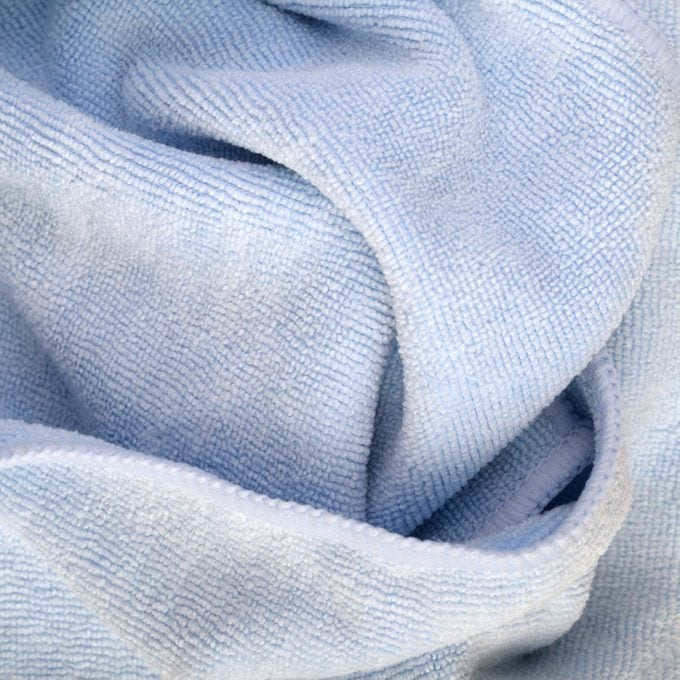Microfiber cleaning cloths are universally useful. Grab a microfiber cleaning cloth to dust your car’s interior, scrub spills on the stove, polish glass and more. They’re great as cleaning rags, bath towels and even mops.
“Microfiber rags are mostly made of synthetic polyester, and, unlike cotton rags or paper towels, they leave no lint behind,” says Vera Peterson, president of Molly Maid, a Neighborly company. “They are usually knitted and very soft, which makes them generally safe for use even on painted surfaces.”
When To Use a Microfiber Cleaning Cloth
It’s easier to ask when not to use a microfiber cleaning cloth. They’re incredibly versatile tools that handle tasks all over the home. “You can replace a microfiber cloth anywhere you’d use paper towels or a cotton rag,” Peterson says.
They’re incredibly absorbent and gentle, so they work on all kinds of messes and surfaces. They’re even useful for sanitizing.
“Using microfiber rags eliminates up to 99 percent of bacteria — about three times the effectiveness of traditional cleaning cloths,” says Peterson. “This is why many hospitals have converted to microfiber cloths, towels and mops.” The microfiber doesn’t kill germs — you’ll need a disinfecting cleaner for that — but it picks them up and removes them with ease.
Certain types of microfibers are better for certain tasks. That’s biggest consideration when cleaning with microfiber cloths. “For example, many people use suede-like microfiber cloths to clean laptop screens, camera lenses, or a pair of glasses,” says Kristiana Laugen, a home expert at Handy, an online marketplace for home improvement and cleaning services.
Rougher cloths are better for grimy surfaces like toilets and sinks. You can purchase a microfiber cloth variety pack with several options.
How To Clean a Microfiber Cleaning Cloth
Microfiber cloths make cleaning easy, even when the cloth itself needs to be cleaned. “The beauty of this cleaning tool is that you can throw it in the washing machine,” says Peterson. Just shake it out, wash it in hot water and dry it on cool. Don’t use fabric softeners, which reduces the cloth’s absorbency.

Which Cleaning Supplies To Use With Microfiber Cleaning Cloths
Most cleaning products, especially all-purpose sprays and glass cleaners, are compatible with microfiber cleaning cloths. “However,” Peterson says, “you’d be surprised how well simply dampening the cloth with warm water works!” One warning: Peterson says to avoid bleach since it reduces the cloth’s quality and longevity.
Microfiber Cleaning Cloth Tips and Tricks
Use these tips from Peterson to get the most from your microfiber cleaning cloth:
- Keep a cloth in your kitchen to clean grease around your stove.
- Don’t saturate a microfiber cloth or mophead. It’s best to spray cleaner on the floor and wipe with a cloth, rather than heavily wetting the cloth and wiping the floor.
- Use a fresh cloth on scratch-prone surfaces like windows. Leftover dirt or debris might leave a mark.
- Lightly mist the cloth with water so it catches the most dust.
- Dampen the corner of a microfiber cloth in soapy water and scrub neglected earbuds. Use the dry side to wipe them clean.
Article source here: How and When To Use Microfiber Cleaning Cloths


No comments:
Post a Comment